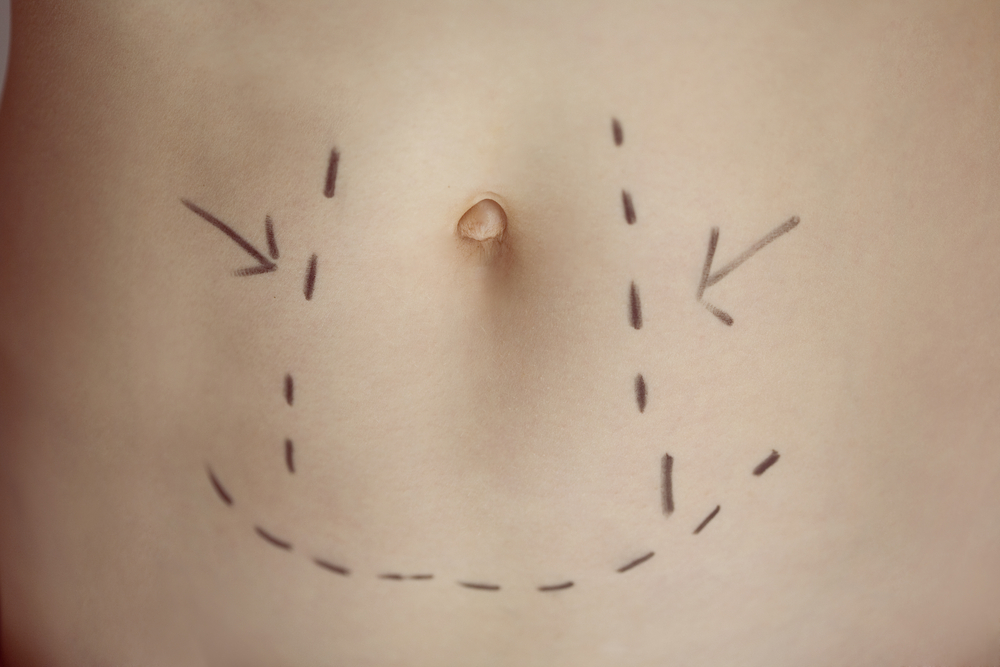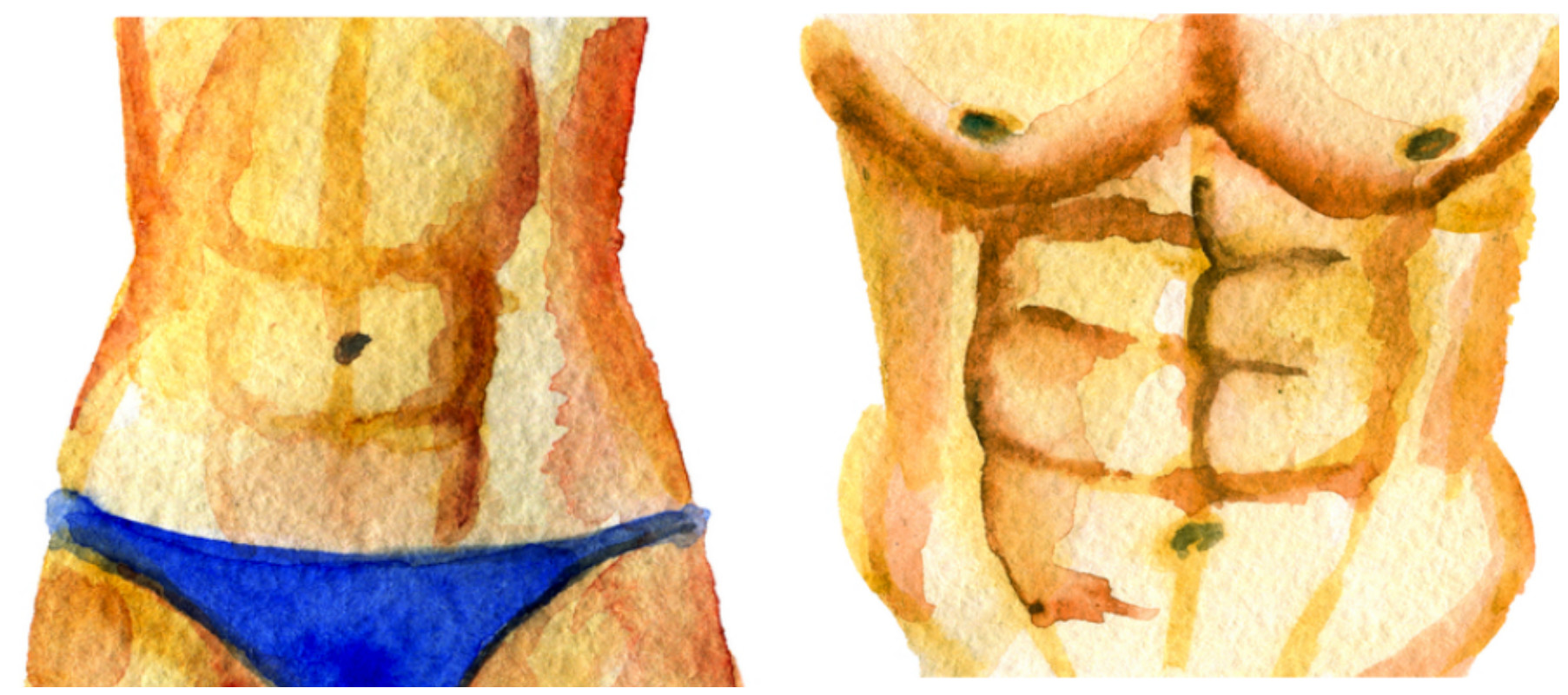- Drainage tubes are a major source of discomfort after a tummy tuck.
- A no-drain tummy tuck can achieve the same or better results.
- Not everyone is an ideal candidate for a drainless tummy tuck
- Consult your surgeon to find out if this is a good option for you.
According to the American Society of Plastic Surgeons, the tummy tuck was the fifth most popular aesthetic surgery procedure in 2017, accounting for over 7% of the total number of surgeries performed.
Since the first published reports of successful tummy tuck operations surfaced in the late 1800s, the tummy tuck procedure has undergone massive overhauls to improve surgery outcomes and avoid complications.
In this article, we will discuss a modified version of the traditional tummy tuck procedure: the drainless tummy tuck.
What is a tummy tuck?
A tummy tuck (technically called abdominoplasty) is a procedure in which excess skin and underlying fat in the abdominal area are surgically removed. It is commonly considered in two groups of people:
- Women with laxity of the skin and abdominal wall muscles after multiple pregnancies.
- People who have lost a significant amount of weight.
How is it performed?
Abdominoplasty is performed under general anesthesia. There are multiple versions of the procedure, depending on the patient’s needs and the surgeon’s preferences.
In the most common version of the operation, a low abdominal incision is made just above the pubis, extending from hipbone to hipbone. The skin is then separated from the underlying layers and the excess parts are cut.
In people with weak or separated abdominal muscles (particularly following multiple pregnancies), the muscles are approximated and stitched together.
Before skin removal, a second incision is made around the belly button to separate it from its surroundings and keep it attached to the body. After removal, a new hole is poked in the skin for the belly button and it is fixed into place with sutures.
The remaining skin is then stretched downwards to meet the primary incision line with which it is stitched. Surgeons use careful suturing techniques to minimize scarring in this area.
Liposuction may be combined with the surgery to further remove stubborn pockets of fat, particularly in the flanks.
Regular vs. drainless tummy tuck
There is almost no difference between the two in the primary surgical technique; the difference lies solely in wound closure.
In regular abdominoplasty, one or more additional small holes are made in the skin, usually below the initial incision. A tube is inserted through the hole so that part of it is under the skin and the rest is outside the body.
This tube is called a drain and is intended to clear any fluid that may accumulate between the skin and the underlying muscles.
As the name suggests, drainless abdominoplasty does not include any tubes.
“This is done by placing multiple sutures between the Scarpa’s fascia (the tissue surrounding the fat layer under the skin) and the deep muscular fascia. We begin superiorly and gradually connect the entire superficial abdominal wall to the underlying muscles,” says Dr. Robert Buchanan, a Highlands, North Carolina-based plastic surgeon.
The technique used here is called the progressive tension suture. This method creates tension that eliminates any potential space between the superficial and deep layers, where fluids might otherwise accumulate.
So if fluid does begin to accumulate, where does it go? The answer lies in the anatomy of the region; Scarpa’s fascia (one of the layers of the abdomen) contains lymphatic channels, which naturally act as internal drains, clearing out accumulated fluid.
“By liposuctioning below this layer and thinning it out, the Scarpa’s layer can be left intact and act as an internal drain for the abdominal wall,” says Boston plastic surgeon Dr. Samuel Lin. Some studies found that combining liposuction with abdominoplasty resulted in lower rates of seroma (fluid accumulation), supporting Dr. Lin’s statement.
Some surgeons add tissue glue between the layers for better adhesion. Others completely forego the sutures and use only tissue glue.
Advantages of the drainless tummy tuck
Drains need to be meticulously taken care of, the bags emptied regularly, and the amount of fluid in the bag kept track of. The main advantage here is that you won’t have to deal with this additional hassle while recovering from your surgery.
While drains are an important tool in a surgeon’s arsenal, they can be very inconvenient for the patient. According to Beverly Hills plastic surgeon Dr. Urmen Desai, patients often find drains cumbersome, painful, and limiting to their activities of daily living for the first week or two after the operation.
“Drains can also leave extra scars at exit points and are sometimes placed in the pubic area, which can be very uncomfortable at best and painful at worst,” remarks Dr. Lin.
Furthermore, drains have to be removed after seven to fourteen days following the surgery, which can subject you to additional discomfort or pain.
A no-drain tummy tuck can also decrease the risk of other complications like infections. “With drains, bacteria from the outside can travel underneath the abdominal flap and cause an infection. For that reason, patients are advised not to shower,” explains Dr. Randal Haworth, who heads The Haworth Institute in Beverly Hills.
Disadvantages of a no-drain tummy tuck
Since there is no way for fluids to drain outside the body, the drainless tummy tuck is theoretically associated with an increased risk of developing a seroma, which is a collection of fluid under the skin that may need to be cleared with a needle.
According to Dr. Adam Hamawy, a Princeton, NJ-based plastic surgeon, some people have a higher baseline risk of developing a seroma. These patients may have better outcomes with a traditional tummy tuck.
However, with good patient selection and proper surgical technique by an experienced surgeon, the risk of seroma occurring is essentially no higher than that of an abdominoplasty with drains.
In fact, published medical research suggests that the use of progressive tension sutures without drains in abdominoplasty may actually decrease the risk of seroma formation and other complications.
Another possible concern is that progressive tension sutures are time-intensive, which means you will spend a bit more time under anesthesia. On the other hand, surgeons who opt for the tissue glue only approach can perform the operation quicker than an old-fashioned tummy tuck.
Who is a good candidate?
Not everyone is a good candidate for a drainless abdominoplasty. People who have undergone massive weight loss, either through surgery or physical means, are generally not considered ideal candidates for the procedure.
“It also may not be a good option for patients with a higher Body-Mass Index (BMI) who also tend to have more drainage naturally after the procedure,” adds Dr. Hamawy.
An ideal candidate is someone:
- Who is on the leaner side; within 15 lbs of their ideal body weight
- Whose weight is relatively stable
- Who is in good general health
With that said, there’s increasing evidence and sentiment among doctors that even patients who are traditionally considered high-risk may still safely benefit from the procedure. Your surgeon should be able to weigh the pros and cons with you, based on your physical condition, to reach a decision on whether to perform a no-drain tummy tuck or the conventional procedure.
Recovery
Recovery is very similar to that of a traditional abdominoplasty with the exception of not having to maintain and then remove a drain.
- Depending on your condition, you should be able to go home the day of the operation or the next day.
- Over the next week, you will experience mild to moderate pain, swelling, tightness, and bruising. Your doctor will prescribe oral analgesics to help with the pain, and you will be advised to avoid physical activity, smoking, and alcohol.
- In the second postoperative week, the discomfort should begin to subside. You may be able to resume work and light physical activity after 10-14 days.
- After about a month you may be able to begin some light exercise.
- Throughout your recovery and for up to a month, you will be advised to wear a compression garment over your abdomen to speed up your recovery and encourage optimal results.
Complications and Risks
While abdominoplasty is considered relatively safe, there are some risks associated with it like any other surgical procedure. Complications may include:
- Postoperative bleeding
- Infections
- Scarring
- Skin discoloration
- Seroma formation
- Poor wound healing
- Allergy to tissue glue (rare)
- Blood clots
The safety profile of a no-drain tummy tuck is essentially similar to that of the traditional operation, with the exception of a possible slightly higher risk of seroma formation.
Obese people have a higher risk of developing complications.
Cost
Depending on your location, the experience of the surgeon, and many other variables, a no-drain tummy tuck can cost you anywhere between $7,000 and $18,000 on the higher end. The use of tissue glue adds about $600 to the base cost of the operation.









